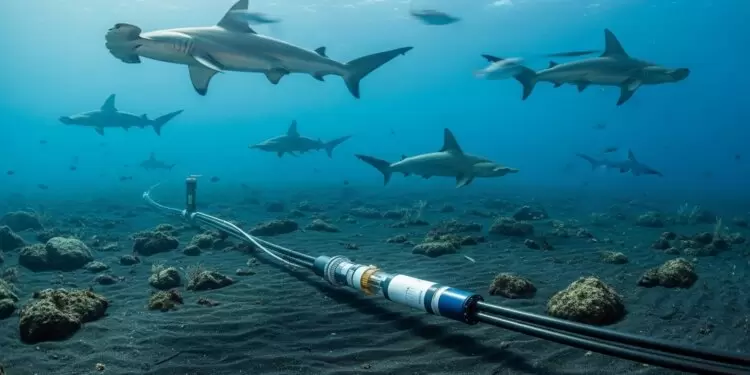Microsoft Confirms Azure Services Stable Despite Red Sea Cable Cuts
In February 2025, several undersea cables in the Red Sea were cut, causing concern across the digital world. These cables carry most of the world’s internet traffic, and when they are damaged, online services often slow down or even stop. Businesses, banks, governments, and ordinary users all depend on these hidden connections. A small break under the sea can create global ripple effects.
But this time, something different happened. While reports of internet disruptions spread, Microsoft confirmed that its cloud platform, Azure, was running smoothly. No major outages, no sudden drops in performance. For a service used by millions, this was not a small achievement. It showed how much effort has gone into building strong backup systems.
We live in a world where stability matters more than ever. We expect our apps, data, and services to be available every second, without fail. Microsoft’s response to this crisis gave a glimpse of how cloud giants prepare for the unexpected.
Let’s explore what happened, why it matters, and how Microsoft kept Azure services stable despite one of the world’s biggest internet risks.
Background: The Red Sea Cable Cuts
Several undersea fiber cables in the Red Sea were cut on September 6, 2025. These cables carry huge amounts of global internet traffic. Parts of Asia, the Middle East, and East Africa saw slower connections and interruptions. Telecom operators and governments immediately noted the scale of the problem.

Investigations began as experts sought the cause and the best repair route. Reports showed the event disrupted traffic on key Asia-Europe routes and raised alarms about the region’s role as a digital corridor.
Microsoft Azure’s Role in Global Connectivity
Azure is one of the world’s largest cloud platforms. It hosts apps, websites, databases, and services for businesses, governments, and developers. Many companies depend on Azure for mission-critical work. Traffic between regions often moves through undersea cables. When those cables fail, cloud providers may see higher latency or routing issues. Microsoft has long invested in global networks and cable capacity to keep Azure fast and reliable.
Microsoft’s Response and Official Status Updates
Microsoft published status messages that warned of higher latency on traffic routed through the Middle East. The company said traffic not traversing the Middle East was not affected. Engineers quickly rebalanced load and rerouted traffic through alternate paths.
Microsoft stressed continuous monitoring and promised updates as repairs move forward. Later updates said Azure service levels returned to normal after rerouting and optimization work.
Technical Resilience: How Azure Stayed Stable
Azure used multiple resilience layers to limit disruption. First, traffic was rerouted over different undersea systems and land paths. Second, geo-distributed data centers handled workloads away from blocked routes. Third, automatic failover and load balancing shifted demand in real time.
Fourth, capacity leasing and partnerships with cable operators added extra bandwidth where needed. These measures raised latency in some routes, but prevented full outages for most customers. The result was a slower user experience in certain corridors rather than a full service crash.
Industry Impact and Market Reactions
The outage highlighted a shared vulnerability. Other cloud providers monitor subsea risks closely. Some customers moved non-critical workloads to different regions or used multi-cloud setups to spread risk. Telecom firms and content providers urged faster repair work and more diverse routing.
Market commentary suggested that the event gave Microsoft a chance to show the value of its global network and cable investments. Still, the episode reminded businesses that single points of failure can ripple across supply chains and apps.
The Root Causes and Geopolitical Context
Experts said the Red Sea corridor is both strategic and exposed. The region sees heavy shipping and military activity. That raises the chance of accidental damage from anchors and ship incidents. It also raises concerns about deliberate sabotage amid regional conflicts. Analysts have warned that attacks or accidents in this corridor could affect a large share of Asia-Europe traffic. Calls for better protection of subsea assets grew louder after this event.
Broader Implications for Cloud Reliability
The cut cables showed how dependent global systems are on physical routes. Cloud uptime relies on both software design and physical links. Companies now weigh alternatives more carefully. These include multi-region deployments, hybrid cloud setups, and satellite links as temporary backups.
The event also pushed private and public sectors to consider stronger protection for critical infrastructure. In short, software resilience matters, but it cannot remove the need for secure, well-maintained fiber routes.
Microsoft’s Long-Term Strategy and Industry Moves
Microsoft has a history of investing in subsea systems. Projects such as MAREA and participation in recent cable builds show a long view on network control and capacity. The company also filed proposals for new regional cables and worked with partners to add landing points and terrestrial diversity. Investments like these aim to lower latency and provide alternate routes in crises. At the same time, Microsoft has pushed for better monitoring and collaboration across operators and governments to speed up repairs and boost security.
Wrap Up
The Red Sea cable cuts were a stark reminder that the internet has a physical backbone. The incident slowed traffic for some regions. Yet major cloud platforms like Azure kept most services running by using reroutes, redundancy, and rapid engineering action. The event pushed the industry to reexamine risk, invest in more diverse paths, and improve protection for undersea assets.
For businesses, the lesson is clear: plan for rare but impactful infrastructure failures. For infrastructure owners and governments, the lesson is also clear: strengthen and defend the cables that carry the world’s data.
Frequently Asked Questions (FAQs)
No. In February 2025, Microsoft said Azure stayed stable. Only some regions had slower speeds. Services kept running because traffic was quickly rerouted through other paths.
The Red Sea is important because many undersea cables pass through it. These cables link Asia, Africa, and Europe. Any cut can slow or disturb global internet traffic.
Disclaimer:
This is for informational purposes only and does not constitute financial advice. Always do your research.






